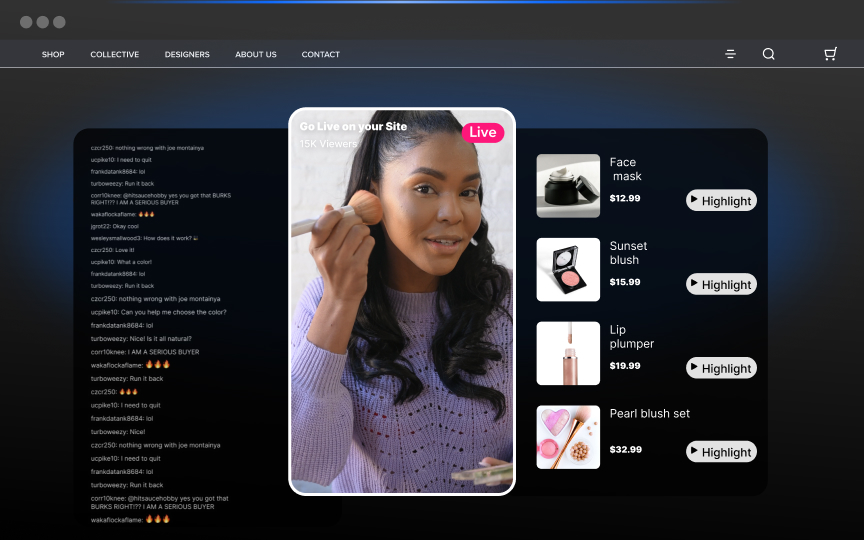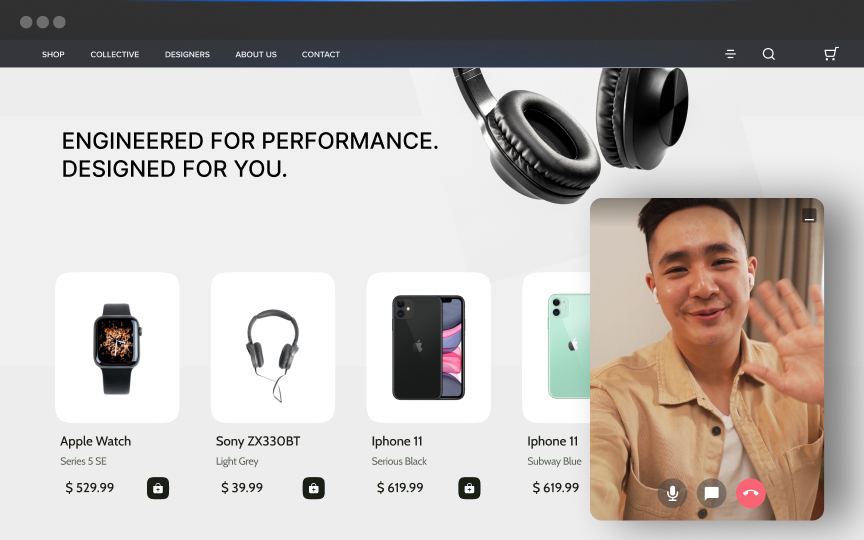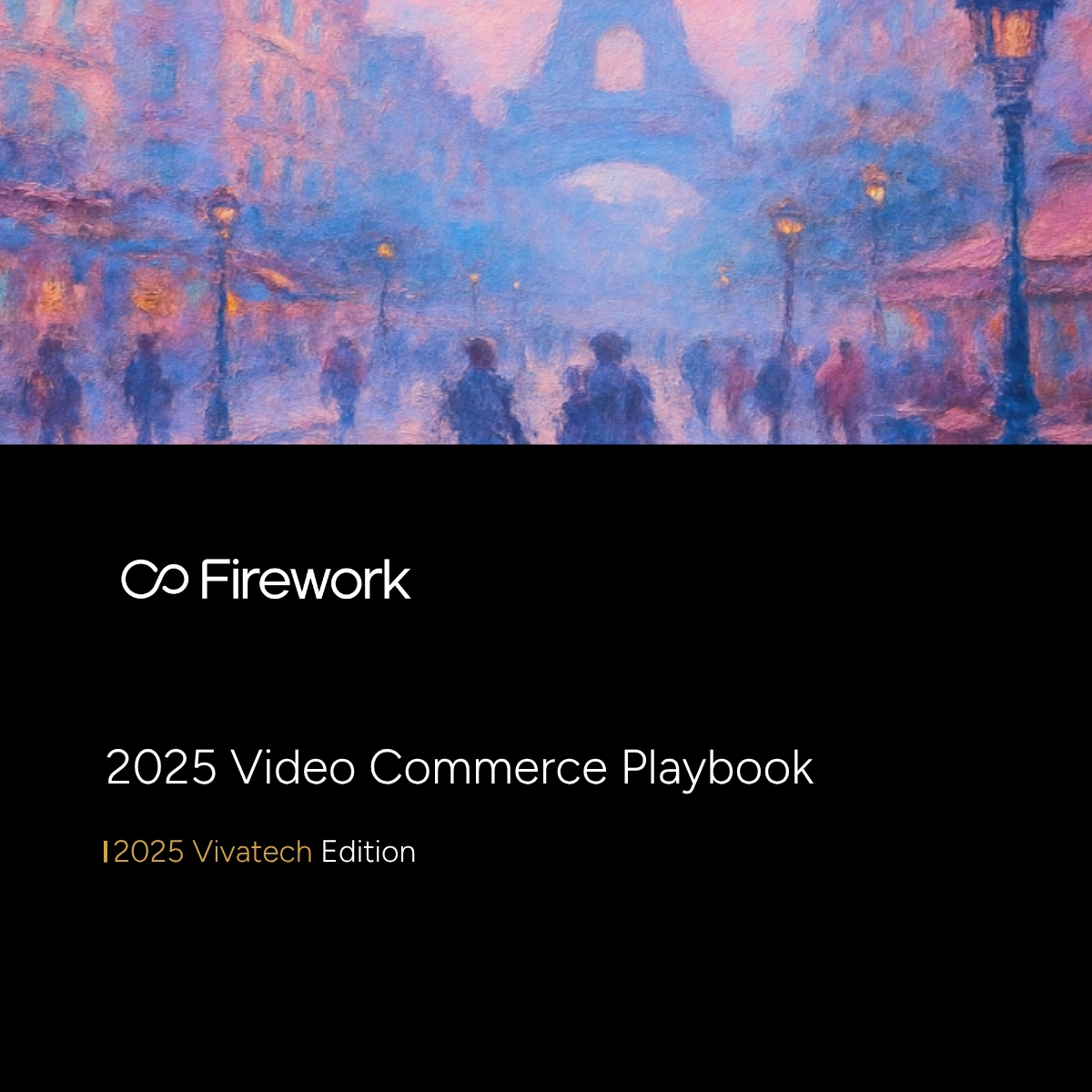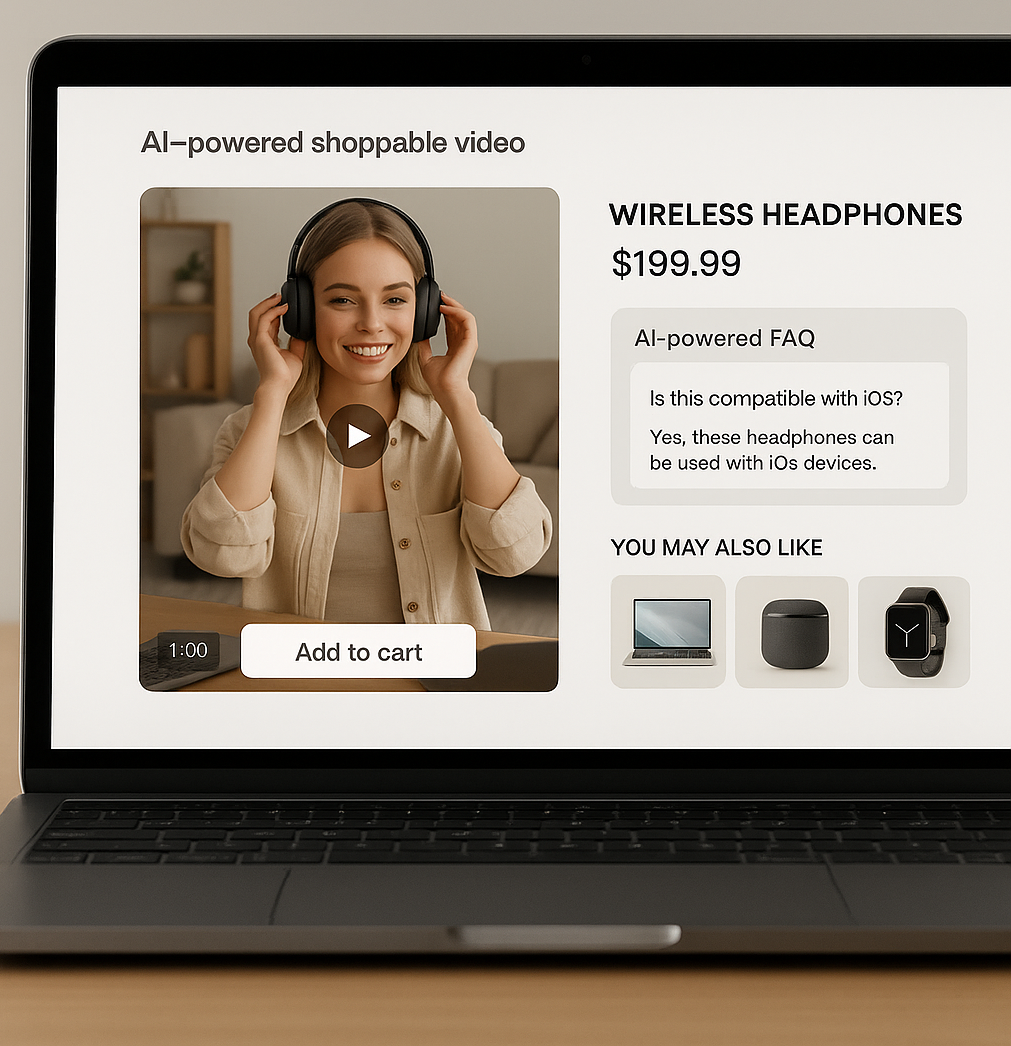You’ve probably noticed that some visitors land on your ecommerce site and leave almost immediately. This behavior can be frustrating, especially when you’re trying to convert these visitors into customers. It’s like setting up a beautiful store, only to see people walk in, glance around, and walk right back out.Understanding why this happens and how to measure it can give you valuable insights into your website’s performance. One key metric to look at is the bounce rate. Let’s dive into what bounce rate means for your ecommerce site and why it’s important.
What is Bounce Rate in Ecommerce?
Bounce rate is the percentage of visitors who leave a website after viewing only one page. When someone lands on your site and exits without clicking on any other pages, that counts as a bounce. This metric helps you gauge how engaging and effective your landing pages are.A high bounce rate often indicates that visitors aren’t finding what they’re looking for or that the page isn’t compelling enough to keep them around. On the flip side, a low bounce rate suggests that visitors are engaging with your content and exploring your site further. Understanding your bounce rate can help you make informed decisions to improve user experience and increase conversions.
How Does Bounce Rate Impact Ecommerce Success?
High bounce rates mean visitors leave your site without engaging further. Each visitor who leaves after viewing just one page represents a missed chance to convert them into a customer. When visitors bounce, they don’t explore your products, read your content, or sign up for your newsletter. This lack of engagement translates directly into lost sales and reduced revenue. The more visitors bounce, the fewer opportunities you have to convert them into paying customers.
Search Engine Rankings
Search engines use bounce rates as a signal to determine the quality and relevance of your website. When visitors leave quickly, search engines may interpret this as a sign that your site isn’t providing valuable content or a good user experience. As a result, your site’s ranking in search engine results pages (SERPs) can suffer. Lower rankings mean less visibility, fewer clicks, and ultimately, less traffic. Maintaining a low bounce rate helps improve your search engine rankings, making it easier for potential customers to find your site. Implementing multifaceted sales strategies can also help improve site engagement and reduce bounce rates.
User Experience Insights
Bounce rates offer valuable insights into how users interact with your site. A high bounce rate can indicate that visitors aren’t finding what they need or that the site’s design and content aren’t engaging. By analyzing bounce rates, you can identify areas where your site may be falling short in terms of user experience. This data helps you make informed decisions about where to focus your optimization efforts. Improving user experience not only reduces bounce rates but also increases the likelihood of visitors staying longer, exploring more pages, and ultimately converting into customers.
What Causes High Bounce Rates in Ecommerce?
When your website takes too long to load, visitors lose patience and leave. Slow page load times frustrate users and create a poor first impression. In the fast-paced digital world, every second counts. If your site doesn’t load within a few seconds, you risk losing potential customers who might never return. This not only affects user experience but also impacts your search engine rankings, as search engines favor faster-loading sites.
Poor Website Navigation
Visitors need to find what they’re looking for quickly and easily. Poor website navigation confuses users and makes it difficult for them to locate products or information. If your navigation menu is cluttered, lacks clear categories, or is hard to use, visitors will likely leave in frustration. A well-structured navigation system helps users explore your site effortlessly, increasing the chances they’ll stay longer and engage with your content. Understanding why shoppers leave sites can provide insights into improving navigation.
Irrelevant or Low-Quality Content
Content that doesn’t meet the needs or interests of your audience will drive them away. Irrelevant or low-quality content fails to capture attention and doesn’t provide value. If visitors land on your site expecting useful information or appealing products and find neither, they’ll leave. High-quality, relevant content keeps visitors engaged and encourages them to explore further, reducing bounce rates and increasing the likelihood of conversions. For more on this, explore online conversion challenges.
Lack of Mobile Optimization
With more people shopping on mobile devices, a site that isn’t optimized for mobile use will see higher bounce rates. Lack of mobile optimization means your site doesn’t display correctly on smartphones and tablets, leading to a frustrating user experience. Mobile users expect a seamless experience, and if your site doesn’t deliver, they’ll leave and possibly never return. Ensuring your site is mobile-friendly is crucial for keeping visitors engaged and reducing bounce rates.
Confusing or Unappealing Design
A confusing or unappealing design can turn visitors away instantly. If your site looks outdated, cluttered, or difficult to navigate, users won’t stick around. A clean, modern design that’s easy to navigate creates a positive first impression and encourages visitors to stay. Design elements like clear fonts, attractive visuals, and intuitive layouts make your site more appealing and user-friendly, reducing the likelihood of visitors bouncing after viewing only one page.
How to Reduce Bounce Rate on Ecommerce Sites
Speed matters. Visitors expect your site to load quickly. If it doesn't, they leave. To optimize page load speed, start by compressing images. Large image files slow down your site. Use tools to compress images without losing quality. Next, minimize HTTP requests. Each element on your page, like images, scripts, and stylesheets, requires a separate HTTP request. Reducing these requests speeds up your site. Enable browser caching to store some data locally on users' devices. This way, returning visitors experience faster load times. Finally, use a content delivery network (CDN). CDNs distribute your content across multiple servers worldwide, ensuring faster load times for users regardless of their location.
Improve Website Navigation
Clear and intuitive navigation keeps visitors on your site. Start with a simple menu structure. Categories should be easy to understand and logically organized. Avoid clutter. Too many menu items confuse visitors. Use a search bar. A prominent search bar helps users find what they're looking for quickly. Breadcrumbs are another useful tool. They show users their path through your site, making it easy to backtrack if needed. Ensure that all links and buttons are clearly labeled and lead to the correct pages. A well-structured navigation system enhances user experience and reduces bounce rates. Implementing user engagement strategies can also help keep visitors on your site longer.
Create Engaging and Relevant Content
Content is king. Engaging and relevant content keeps visitors interested. Start with your product descriptions. They should be detailed and informative, highlighting the benefits and features of your products. Use high-quality images and videos to showcase your products. Blog posts are another way to engage visitors. Write about topics relevant to your audience. Share tips, how-to guides, and industry news. User-generated content, like reviews and testimonials, adds credibility and engages visitors. Regularly update your content to keep it fresh and relevant. Engaging content encourages visitors to explore more pages on your site. For more tips, check out how to increase online conversion rates.
Ensure Mobile-Friendliness
More people shop on mobile devices than ever before. Your site must be mobile-friendly. Use a responsive design that adjusts to different screen sizes. Test your site on various devices to ensure it looks and functions well. Simplify navigation for mobile users. Large buttons and easy-to-read text improve the mobile experience. Optimize images and videos for mobile to ensure they load quickly and display correctly. Mobile-friendly sites keep visitors engaged, reducing bounce rates.
Use Clear Calls-to-Action
Calls-to-action (CTAs) guide visitors through your site. They should be clear and compelling. Use action-oriented language like "Shop Now," "Learn More," or "Sign Up." Place CTAs prominently on your pages. They should stand out but not overwhelm the content. Use contrasting colors to make them noticeable. Ensure that each page has a clear next step for the visitor. Whether it's adding a product to the cart or signing up for a newsletter, a clear CTA encourages visitors to take action and explore more of your site. For more ideas, explore website engagement tools.
Implement Personalization Strategies
Personalization makes visitors feel valued. Use data to tailor the shopping experience to individual preferences. Show personalized product recommendations based on browsing history and past purchases. Use personalized email marketing to re-engage visitors who have left your site. Dynamic content, like personalized banners and offers, enhances the user experience. Implementing personalization strategies keeps visitors engaged and encourages them to explore more pages on your site, reducing bounce rates.
What Are the Benefits of Reducing Bounce Rate?
Reducing bounce rate directly impacts your bottom line. When visitors stay longer on your site, they are more likely to explore multiple pages and engage with your products. This increased engagement often translates into higher conversion rates. For instance, a visitor who browses several product pages has a higher chance of adding items to their cart and completing a purchase. Each additional page they visit provides more opportunities for you to showcase your offerings and persuade them to buy. Therefore, a lower bounce rate means more chances to convert visitors into paying customers, ultimately boosting your sales.
Better Search Engine Rankings
Search engines use bounce rate as a signal to determine the quality and relevance of your website. A high bounce rate suggests that visitors are not finding what they need, which can negatively impact your rankings. Conversely, a lower bounce rate indicates that users find your content valuable and engaging. This positive user behavior can improve your search engine rankings, making your site more visible to potential customers. Higher rankings lead to increased organic traffic, providing more opportunities for conversions and sales. Maintaining a low bounce rate helps you stay competitive in search engine results, driving more visitors to your site.
Enhanced User Engagement
A lower bounce rate signifies that visitors are engaging with your site. Engaged users are more likely to spend time exploring your content, reading product descriptions, and interacting with various elements on your pages. This engagement not only increases the likelihood of conversions but also builds a stronger connection between your brand and your audience. Engaged visitors are more likely to return to your site, recommend it to others, and become loyal customers. Enhanced user engagement fosters a positive user experience, encouraging visitors to stay longer and explore more, which further reduces bounce rates. To learn more, see how to enhance customer experience.
Valuable Insights for Optimization
Monitoring and analyzing bounce rates provide valuable insights into user behavior and website performance. A high bounce rate can highlight areas that need improvement, such as slow page load times, poor navigation, or irrelevant content. By identifying these issues, you can make targeted optimizations to enhance the user experience. For example, if visitors frequently leave a particular page, you can investigate and address the specific reasons behind it. These insights help you create a more user-friendly site, tailored to meet the needs and preferences of your audience. Regularly optimizing your site based on bounce rate data ensures continuous improvement and better performance, ultimately leading to increased conversions and sales.
How Can Video Commerce Help Reduce Bounce Rate?
Video commerce offers a dynamic way to keep visitors engaged. Unlike static images or text, videos capture attention quickly and hold it longer. Interactive elements within videos, such as clickable product links, polls, and quizzes, encourage users to interact with your content. This interaction reduces the likelihood of visitors leaving after viewing just one page. When users engage with videos, they are more likely to explore other parts of your site, lowering bounce rates and increasing the chances of conversion. Learn more about video marketing tips.
Improved Product Visualization
Videos provide a more comprehensive view of your products compared to static images. They allow you to showcase products from multiple angles, highlight features, and demonstrate usage. This detailed visualization helps potential customers understand the product better, addressing any doubts they might have. When visitors can see a product in action, they feel more confident about making a purchase. Improved product visualization through videos keeps visitors on your site longer, reducing bounce rates and boosting engagement. For more insights, explore the performance impact of video.
Enhanced Storytelling and Branding
Videos are a powerful medium for storytelling. They allow you to convey your brand's message and values more effectively than text or images. Through video, you can create a narrative that resonates with your audience, making your brand more memorable. Enhanced storytelling builds a connection with visitors, encouraging them to stay on your site and learn more about your offerings. When visitors feel connected to your brand, they are less likely to bounce and more likely to explore further, leading to higher engagement and conversion rates. Discover the power of shoppable video for your brand.
Personalized Video Experiences
Personalization in video commerce tailors the shopping experience to individual preferences. By analyzing user behavior and preferences, you can deliver personalized video content that speaks directly to each visitor. Personalized videos might include product recommendations, tailored offers, or content that aligns with the visitor's interests. This level of personalization makes visitors feel valued and understood, increasing their engagement with your site. Personalized video experiences keep visitors interested and reduce bounce rates by providing content that is relevant and appealing to them. Learn more about leveraging interactive video to guide shoppers toward purchase.
What is a Good Bounce Rate for Ecommerce in 2024?
Several factors influence bounce rate targets. First, the type of products you sell plays a role. High-ticket items often have lower bounce rates as visitors spend more time researching. Second, the source of your traffic matters. Organic search traffic usually results in lower bounce rates compared to paid ads, where visitors might not be as targeted. Third, the quality of your landing pages impacts bounce rates. Well-designed, relevant pages that match visitor expectations tend to retain users better.Understanding these benchmarks and factors helps you set realistic bounce rate targets for your ecommerce site in 2024.Put your commerce in motion. Find out how Firework can power your business forward. Request a demo today to see how our cutting-edge video commerce platform can transform your ecommerce site, reduce bounce rates, and drive sales.
Unlock Exclusive Insights
By submitting this form, you agree to Firework's privacy policy and consent to receive personalized marketing communications. You can unsubscribe at any time.




























